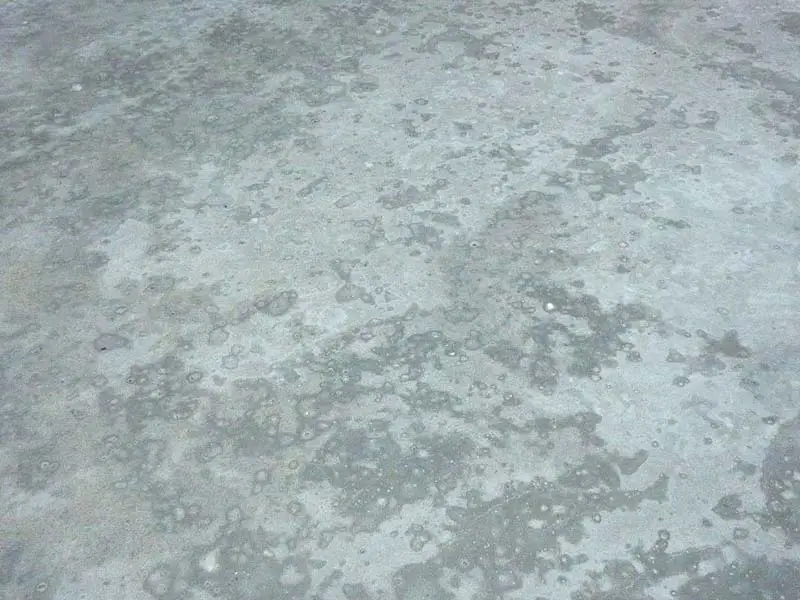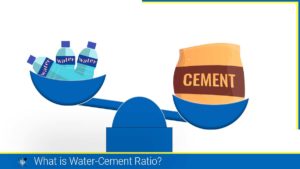What is Concrete Laitance?
Laitance is an accumulation of fine particles on the surface of fresh concrete due to an upward movement of water (as when excessive mixing water is used). It is also known as a milky deposition on the surface of new cement or concrete, usually caused by too much water.
The laitance is a layer of weak and non-durable material containing cement and fines from the aggregates, brought through bleed water to the top of the concrete (Alexander, 2005). If the laitance is not removed before overlaying of newly prepared concrete, it will lower the bond markedly. Sand-blasting will be sufficient to remove the laitance.

Definition For Concrete Laitance:
Concrete Laitance is defined as “an accumulation of fine particles on the surface of freshly placed concrete occurring when there is an upward movement of water through the concrete due to the presence of too much mixing water, to excessive tamping, or to the vibration of the concrete.” The book, “Cement and Concrete Terminology,”
It is defined as “an accumulation of fine particles on the surface of freshly placed concrete occurring when there is an upward movement of water through the concrete due to the presence of too much mixing water, to excessive tamping, or to the vibration of the concrete.” The book “Cement and Concrete Terminology,” American Concrete Institute Publication SP-19.
Also, read: What is Bleeding in Concrete?
Cause of Laitance
It is caused due to the following factors.
- Too much-mixed water
- Overworking or over-manipulating concrete surface
- Improper finishing
- Job traffic
- Poor curing regime
Effects of Laitance on Concrete
- If laitance is formed in the construction of concrete pavement, the pavement top surface loses its wearing quality
- Laitance formed on the road, produces dust in summer and mud in the rainy season.
- Laitance causes shrinkage cracks.
- If laitance is formed on a particular lift, a plane of weakness would form and bond with the next lift would be poor
Also, read: What is Efflorescence?: Types | Cause | How To Remove
Remedy
It can be prevented from occurring or appearing on the surface of the finished concrete surface. The remedy to prevent the formation of laitance is by strictly sticking to the mixed proportion of the concrete and applying the correct water-cement (w/c) ratio.
Method of Remove Laitance
Laitance can be removed by adopting the following method.
- Shot blasting: A fast and efficient method that involves firing abrasive elements on the area at high velocity.
- Mechanical planning: Used for thicker laitance and involving a machine with rows of rotating tungsten-tipped cutters.
- Scabbling: A heavy-duty method that involves compressed air tools which vibrate and impact the concrete surface.
- Grinding: Handheld tools are used for smaller areas and edges.
- Acid etching: The acid attacks and breaks down the top surface. This should only be used if other options have been ruled out.
Also, read: Factor Affecting Workability of Concrete
FAQs:
Q: What causes concrete laitance?
A: Concrete laitance is caused by several factors, including overworking the surface during finishing, using too much water in the mix, and inadequate curing.
Q: How can I prevent the formation of concrete laitance?
A: Proper curing techniques, avoiding overworking the surface during finishing, and using the correct water-to-cement ratio can all help prevent the formation of laitance.
Q: Why should laitance be removed?
It is important to remove laitance from the concrete surface because it will prevent adhering of new concrete, paints, any coating, etc.
Q: How can I remove concrete laitance?
A: Mechanical methods, such as abrasive blasting or grinding, are often used to remove laitance and expose a clean, solid surface. Chemical treatments can also be used to dissolve laitance
Q: Is concrete laitance a sign of poor-quality concrete?
A: Concrete laitance is not necessarily a sign of poor-quality concrete, but it can be an indication that proper construction techniques were not used or that the curing process was inadequate. Laitance can occur even in high-quality concrete if it is not handled properly.
Q: Does concrete laitance affect the strength of the concrete?
A: Concrete laitance can affect the strength of the concrete over time if it is not removed. Laitance is weaker and more porous than the underlying concrete, and it can eventually break down and compromise the structural integrity of the concrete. However, if laitance is removed promptly and the underlying concrete is sound, it should not significantly affect the strength of the concrete.
References:
- Alexander, M. G., Beushausen, H., Dehn, F., & Moyo, P. (2005). Concrete Repair, Rehabilitation and Retrofitting
- Merriam-Webster. (n.d.). Laitance. In Merriam-Webster.com dictionary. Retrieved November 19, 2022, from https://www.merriam-webster.com/dictionary/laitance
![]()







